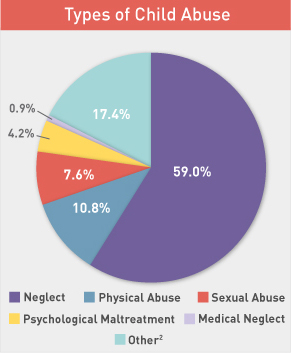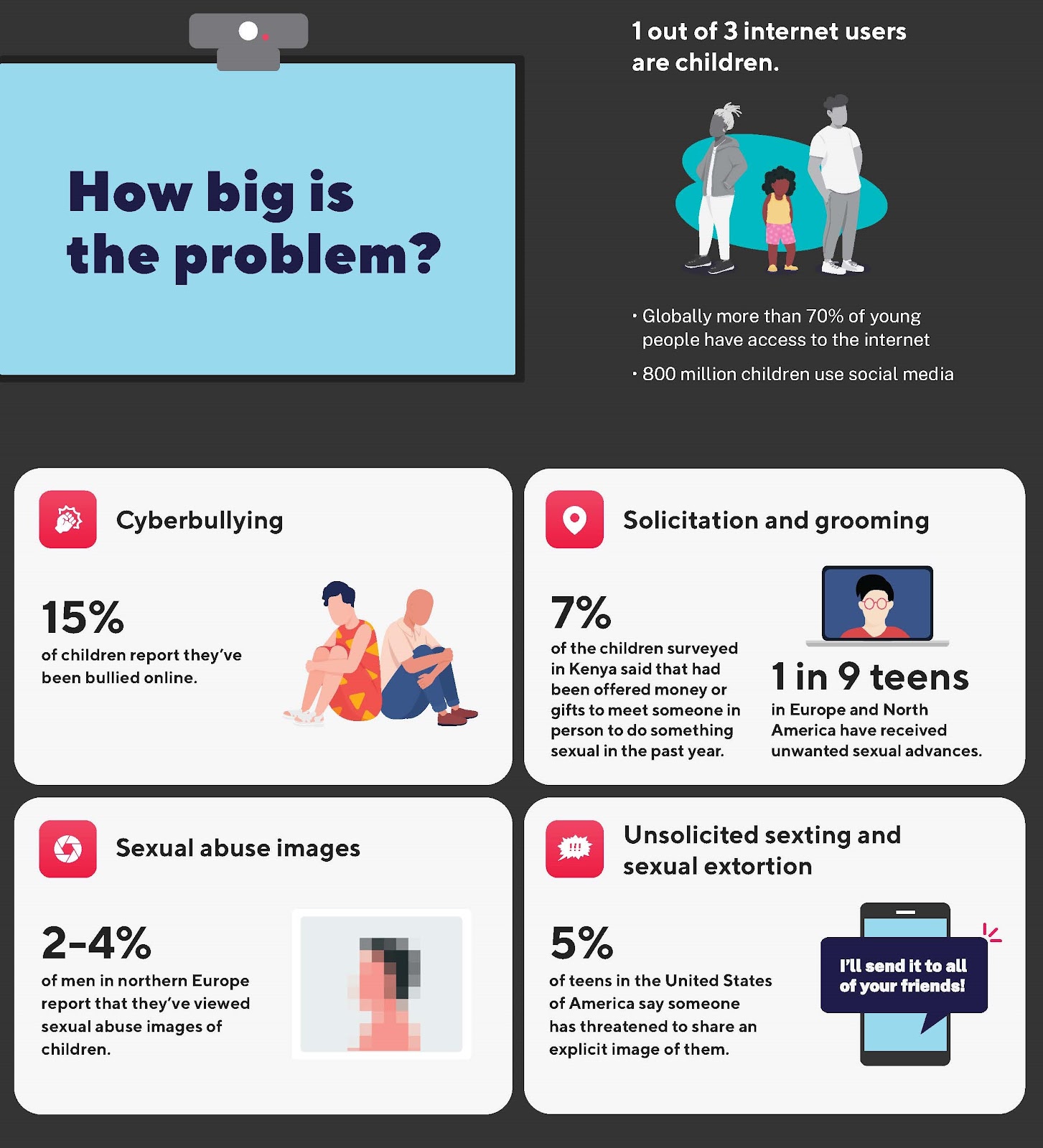ROLE OF TEACHER IN CONSCIENTISING CHILD ABUSE OVER INTERNET
(Article contains information about conscientization- meaning, history, statistics about child abuse over internet, and the role of teacher in conscientising child abuse over internet)
The past decade has
seen rapid development and tremendous growth in the use of electronic,
computer-based communication and information sharing via the “internet”.
Defined as a “decentralized, self-maintaining series of links between
computer networks”, the internet operates throughout much of the world.
The speed at which society has adopted this technology, its spread
internationally, and its significant penetration into work, school, and
family life, have been described by some as a “revolution”. The use of the
internet promises many benefits for society, by circumventing the effect
of geographical distance and facilitating information sharing. It has
been contended, for example, that the internet can revitalize a sense of
community by facilitating meaningful communication between “grass root
electronic communities”. The internet has also been found to have
particular benefits for children and young people, who claim that its use
facilitates social contact, improves their writing and language skills,
and makes them “better students”. It also acts as a medium for referral
and advice
Despite the benefits
associated with internet use, rapid technological advances, growth in the
range of internet services and applications, and the ever-increasing take-up of
the internet have not been accompanied by adequate recognition of the
dangers that may result from such technology. There has been increasing
recognition that the “downside” of the internet revolution may be new
opportunities to harm or abuse young internet users. Broadly speaking,
the internet has been shown to act as a new medium through which some commonly
recognized forms of child maltreatment, sexual and emotional abuse, may
be pursued. Unfortunately, the development and adoption of preventative
measures have not kept pace with the spread of internet use and
technological developments.
This online
assignment reviews the various means by which the internet may be a source of
(or lead to) the abuse or exploitation of children and young people. The
focus of this assignment is on the means and causes nature of the
exploitation of children over the Internet. It also focuses on the role
of a teacher in handling these situations, and how a teacher can be a
change element in society and influence young people.
Conscientisation is the ability to critically perceive the causes of social, economic and political oppression and to take action against the oppressive elements of society. It is a state of in- depth understanding about the world and resulting freedom from oppressed.
The objective of “Conscientisation” is to power the knowledge and resources of groups, by facilitating a learning process that becomes critical, “transitive” and dialogical consciousness, and then potentiality of “liberation”. The “Conscientisation” is practice diffused in many countries, mainly in “South America, based on the trust in oppressed “knowledge” and on the questioning role of leader who educates and learn by dialoguing.
There exist a lot of social evils in the society. Each student is an element of future society in making. And each teacher has the opportunity to curb those social evils through his/her student. The most important aim of education is to create a human being out of a child; a human being who is useful, right and just. With conscientisation through education, the teacher and student is able to recognize the social evils, discuss/ study about them, create awareness and curb those in future. Some of the important social evils in general are:
➢ Corruption
➢ Terrorism
➢ Anti- National Activities
➢ Violence against women, children and other genders
➢ Drug abuse, Alcoholism
➢ Racial discrimination, etc
Among these, there are a few social evils prevailing among, or in other words, affecting children. Some of them are
➢ Use of tobacco, drugs and alcohol
➢ Immoral activities
➢ Ragging/ Bullying
➢ Cyber crimes
food/ groceries to talking to friends. The Internet is a tool for studying, reference, information collection, information exchange and much more. Internet proved to be a very useful tool during the covid situations in the field of education, across the world. The concept of online classes gained momentum. Concrete libraries have been almost replaced by the vastness of information available on internet. Even though there is a negative side to this, the possibilities of easiness internet provide is of no match.
The internet is a valuable tool; however, it can also be detrimental to the well being of children due to numerous online hazards. There is the potential for children to be abused via cyberspace through online sexual solicitation and access to pornographic content. Indeed, the Internet is replete with inappropriate material, including pornography, chat rooms with adult themes and access to instant messaging wherein others could misrepresent themselves. Because children are actively utilizing the Internet where unknown others can have access to them or where they can be exposed to inappropriate sexual materials, they require safeguarding and education in safe Internet use.
CHILD ABUSE OVER INTERNET: WHAT, WHY AND HOW
Generally, going online enables individuals to play a personality role, which might be more or less different from their real personality. There will always be a difference between your role in virtual reality and in the real world. We play roles as adults and teachers, or children and students, both in the real world and virtual realities. However, in the virtual world, we may find it easier to live our dreams and fantasies. In this type of ‘Second Life’ environments on the internet, players can be unfaithful and can build their dream existence alone or with others. What is so appealing about being online? One answer to this question is that you can be in a different, informal and anonymous setting where you can live out dreams and fantasies. When you are a
child, who is waiting for social acceptance and eager to indulge into the diverge opportunities internet provides, internet becomes a heaven of such instances.
Children tends to take this second life more carefully and rigorously than elders, making it easier for them to fall prey to online child abuse. 21st century kids are very highly prolific in internet and online usage than their parents and teachers. Keeping up with them regarding these are a tremendous task in itself. They take this as an advantage in hiding the doings and private online life from elders. The more private they go, higher is the chances of getting abused over internet. And this itself can cause severe results, including child suicide, as reports show. On instances when they gets attacked over internet, due to fear of outcomes and response, they tend to not disclose to their elders, or seeking help. Some abuses start online, but gradually takes shape of being real in their reality itself, tracking down the child. These gets out of hands very soon.
The internet is an easy environment in which children can be exposed to abuse. Teachers should receive training about the child abuse on the internet. When children are exposed to abuse, they may experience difficulty to express it. Perpetrators of child abuse in real life is also abusive on internet. Hiding one’s identity and giving misleading information about age and gender is very easy on internet. The possibility of deception of children by malicious persons is higher on the
internet than in real life. Downloading, duplicating and delivering to masses of potentially inappropriate content for children is quite simple on the internet. If internet literacy levels of families increase, the possibilities for their children being exposed to abuse on internet will diminish. Child pornography on the internet is an important problem to be solved at the international level.
TYPES OF CHILD ABUSE OVER INTERNET
1. Economic/ Monetary
When the perpetuator tries to get to the money, of their parents generally, through the child, it becomes economic. These are seen very widely through gaming platforms, like Free Fire, where the offender befriends the child at first, and starts looting his/her money through different means. Some times they ask for money saying they are not rich, while some other times they hit on the alter ego asking if his/her parent is not rich enough to provide money. There are also instances where the offender threatens the child regarding
some ‘not-even-big’ offense, making the child believe they did something wrong and accumulating money through them.
2. Commercial Exploitation
Children’s internet usage is being increasingly used as a market, paid for, and dominated by advertisers. While advertising for children in television is targeted en masse, online advertising can match a procured child’s profile to product, potentially increasing the likelihood of a sale.
3. Paedophile activities on the internet
Children are subjected to sexual offenses through messages, online chatrooms, and even emails by paedophiles over internet. These can be in the form of texts, images or even videos. The scope of identity hiding is the main reason why these people now resort to online means
4. Violent Materials over internet, especially Games
It might sound like not an abuse, but the increased violent content over the internet and the effect that has on the psychology of a child is nothing short of an abuse. These take place in e-games, chat rooms and even in contents online.
5. Sexually explicit or offensive content
Apart from visiting pornographic websites, the violence that children have to go through by getting explicit content over email, unsolicited sexual/ offensive materials like trolls are very high.
6. Cyber Bullying
These are the new generation side-lining of intellectuals or people with opinions happening across the globe. Due to lack of respect for one another and differences, certain people tend to troll, give abusive responses and even threats over unconventional opinions. These can affect a child’s mentality and peace of mind for an eternity. Sometimes these happen even from their own known people, or classmates.

CASE STUDIES
There are many incidents going on related to child abuse over the internet throughout the world every minute, but a few of these incidents were so major and shocking that they made it to the headlines in the daily newspaper. Two of them have been mentioned below:
1. THE Nth ROOM CASE (SOUTH KOREA): This issue took place in South Korea. In this case, a chatroom was formed in the telegram app with more than 200 participants. In that chatroom sexually abusive contents were shared. Most of these contentsinvolved girls below the age of 18. The main admin of the chatroom would follow girls through their social media platforms and gather sensitive information. Later he would coerce the girl with information about them and make them record/perform sexual activities. These videos were then shared in the chatroom and all the participants were asked to pay some money to the admin in exchange to these videos. In early 2020, the South Korean police found the main admin of the chatroom. Trials are going on for this case right now.
2. THE BOIS LOCKER ROOM CASE (INDIA): In early May 2020, the screenshots related to ‘the bois locker room’ had gone viral. Some teenage boys had created an Instagram group where they used to share obscene pictures of girls and discuss about them and their body parts. They also used to share morphed pictures of women. Though the investigation is going on, there are no proof of them talking in manner of sexual assault. The police till now have arrested two adult group admin, one active participant and one juvenile who has been send to the correction house. It is said that there are more than 24 participants of that group.
AFFECT ON CHILDREN
Harmful images and posts can be distributed widely. They can circulate on the internet for a long time or have potential to resurface at any time. Research on how online violence affects children is still limited. However, we do know that it can cause severe and long lasting harms, such as:
1. Mental health effects (Anxiety, depression, psychological trauma, self-harm) 2. Health risk behaviour (Risky behaviours, substance abuse)
3. Physical health effects (Weight gain and obesity, Health problems in later life like heart diseases and diabetes)
courtesy: World Health
Organisation;2022
TEACHER AS A
CONSCIENTATION AGENT
Teachers, can
rightfully be called a conscientisation agent, because through their
perseverance, love and sacrifices, they have shown the right path in
which great societies have build their way. It is the teachers, who mould
one’s character, one’s personality and show the right direction which
lead man to the perfection that is already existing in him.
The role of teacher
is multi- faceted one comprising academic, pedagogical and social roles.
Academic roles comprise teaching, counselling and supervisory roles while
pedagogical roles include instructional, evaluation and facilitating
roles. As a facilitator of learning, the teacher is involved in
motivating pupils to learn, maintaining control in the classroom and the school
in general, and creating a conductive environment for learning to take
place. Social roles of the teacher include among the others socializing
roles which is preparing the pupils to participate in the way of life of
the society; others include reference roles, detective roles, parent surrogate
(or substitute parent), confidants and affectionate roles.
No other personality can have an influence more profound than that of a teacher. Students deeply affected by the teacher’s love and affection, his character, his competency and his moral commitment. A popular teacher becomes a model for his students. The students try to follow their teachers in his manners, customs, etiquette, style of conversation and his get up. He is their ideal. He can lead them anywhere. During their early education, the student tends to determine their aims in life and their future plants in consultation with their teacher. That much is the influence a teacher can have on an individual’s life.
TEACHER’S ROLE IN CURBING CHILD ABUSE
OVER INTERNET
Before anything, a
teacher must themselves be aware of the social evils happening through
internet. For that, there needs to be made every effort, for the benefit of the
children, to become conversant with the workings of the internet and knowledgeable
in the following areas:
➢ Rudimentary
understanding of the internet and its usage
➢ What is available on
the internet- what is immoral, illegal and unethical ➢ What are
: instant messenger programs
: controls and measures possible
: blocks and filters
: chat rooms both moderated and
non-moderated.
All the up-to-date;
information concerning these topics is available from any internet
Service Provider (ISP). Various websites are assessable that detail
advice, recommend safety issues and offer software to help educate the
novice ser. In addition, many books are also available.
WHAT CAN A TEACHER DO
TO PROVIDE CHID ABUSE OVER INTERNET
1. Setting up a help desk at
school/college
A help desk which
will include the school authorities/ teachers, as well as student
representatives can give the child a window to get help from school/ peer
group. This will also increase the awareness among the children about
potential threats over the internet.
2. Debates/ Discussion Forums and
Groups
Setting up occasional
discussion forums at classrooms, in activity forms such as debates can
make the child aware of possibilities of abuse that can happen over the
internet by their own research than as educational talks.
3. Resource Person Talks
Inviting the city
police chief/ cybercrime department representatives to give children some
talks and information about the child abuse can prove to be an effective tool
to help the children be aware, prevent and adapt to abuse over internet,
as well as be informed of their rights and wrongs.
4. Sharing Personal Stories
Nothing works better
than sharing the personal experiences and stories to the children.
Stories about abuses, their outcomes and how it could have been prevented. Or
even how bravely children/ the teacher herself overcome some of them can
make the children feel confident about these being not a huge concern and
be brave to stand up against them. Some children might not speak out due
to fear of reactions. Stories or experiences can prove effective on such
children also.
5. Educating about better use of
internet than social medias
Social medias play an
important role in social life of everybody, especially children. But the
internet is much more than social media which many children fail to recognize.
Giving them constant knowledge and knocks about the alter use of internet
and effects of social media can affect at least some children and help
them into better ways.
6. Stay informed
Teachers and school
staff should be aware of different types of child online abuses and have
opportunities to talk about specific cases
7. Create a safe space
Remember that it is
incredibly difficult to young people and children to talk about abuses. As
such, schools should make every effort to create safe spaces where young people
can talk about what has happened to them
8. Giving online assignments and
projects
Using online means to educate them
against the internet abuse is a very effective way in itself. Since the
child will be dwelling into the informative part of internet, it can open a
wide window in front of the child where he/she might surf in detail in future
as well, educating themselves about other things.
9. Be a good observer and friend
The teachers should
be good observer of their children’s problems related to the internet
usage, and should be part of the team to find solution to the problems they
face.
10. Make suggestive online rules that
children can adopt
In order to improve service
quality and ensuring the safety of children online, more rules and
standards need to be designed and suggested to the children for
self-control.
11. Internet Cafes around the
school
It is essential that
the places where children play games and cafes are controlled more
efficiently, especially the ones available for children around the
school.
12. Be a part of the
child’s internet world for better online approach If your teacher is approachable
over social medias as well, the chances of that child reaching out to
them on a crisis is more.
13. Protecting “at risk” children
As
research has suggested, children with certain characteristics, particularly
those who have been victimised previously,
will be the most adversely impacted by exposure to offensive material on the internet. Taking special
care of such children and caring for their
traumas is a protective way by the teacher.
14.
Street plays, Dramas and interactive activities to create public awareness Involving
children into initiatory activities into social environment can also come handy in such situations. This will enable them to
distinguish between reality and fantasy.
15. Reporting the
abuse
Reporting
the abuse to the concerned authority, even if that means putting yourself at risk is supposed to be the first and foremost
responsibility of any teacher in the event of identifying a child abuse.
16. Strengthen school
laws and improving enforcements
Enacting
comprehensive school legislation in case of any online abusers are identified among the children, such as bullies- needs to be in
place.
17.
Addressing risk factors that make children vulnerable to recruitment of sex offenders
Identifying
children with economic disadvantages, preventing drug usage and alcoholism among children and rightly pointing out and
assisting children who might be
easy targets should be done.
18. Engaging parents
and caregivers in awareness programs
Addressing
online abuse in school safety programs (bullying prevention, dating abuse prevention, sexual education), teaching parents how to
talk to their kids about online safety
ad teaching young people how to make safer choices in online relationships.
19. Promoting Internet
Literacy of the family members
If
internet literacy levels of families increase, the possibilities for their
children being exposed to abuse on internet will
diminish.
20. Target offenders
Going along assuming
all children are good/ naïve is also not right. There could be children
who are perpetuators. So, targeting offenders by educating and warning
potential solicitors, ensuring a timely and consistent response to abusive
behaviours are also needs to be done.
CONCLUSION
“The
true character of a society is revealed in how it treats its children” – Nelson
Mandela
A child entering an
adult life prematurely, causing mental traumas, stress, personality
development issues and emotional damages- this is what can be said about a
child on the potentially risky online environment these days. Over the last ten
years, the spread and usage of Internet and other related
ICTs have increased significantly in all parts of the world. This development has largely been seen as positive
since it facilitates access to information and communication between people. It can also be beneficial for children
for both educational and social
purposes. However, it can also pose new risks for children's safety, personal development and well-being. In particular,
there is evidence to suggest that it has increased the risks for child abuse and exploitation in both online and
offline settings.
WHO says, “Globally,
more than 70% of young people have access to the internet, and, 800 million
children use social media”
Children
are spending more time online than ever before. And they’re getting there
sooner. Around the world, a child goes online for the first time every
half second.
Growing up online offers limitless opportunities. Through computers, smartphones, gaming consoles, and televisions, children learn, imagine and develop their social networks. When used in the right way – and accessible to all – the internet has the potential to broaden horizons and ignite creativity the world over.
But with these opportunities come serious risks. But as a teacher, there is so much that can be done. So many possibilities and solutions. A good teacher can solve so many problems and also become a saviour to many. This work tried to discuss a few of such options. May there come a day when there be no child abuse online. Though this isn’t something that can be entirely possible, I guess, that’s the thing about ‘wishes’ and ‘prayers.
BIBLIOGRAPHY
1. Pedagogy of the
Oppressed; Paulo Freire (Contiuum Publication- 1970)
2. Child Abuse and
the Internet; Research Paper by Janet Robin Stanley, University of
Melbourne; 2011
3. The Teacher and
the Needs of Society in Evolution; Edmund James King (Pergamon Press-
1970)
4. Internet Child
Abuse; Current Research and Policy; Julian Davidson and Petter Gottschalk
(taylor and Francis Publications- 2010)
5. Teacher and
Education in Developing Society; Saritha Aggarwal (Vikas Publishing
House- 2010)
6. Self, Community
and Psychology; Kapano Ratele, Norman Duncan and Others (UCT Press-
2004)
7. Teacher in
Emerging Indian Society; Pearson Pearson (Pearson Publications 2010)
8. A Practical Guide
to Identification, Action and Prevention of Paedophiles, Child Abuse and
the Internet; Adrian Powell (Radcliffer Publications- 2007)
E-Resources (Please
Ctrl+Click to follow link)
9. Sexual abuse and exploitation of
children through the Internet and other information and communication
technologies (unicef-irc.org)
10. Child Abuse and the Internet -
LawLex.Org
11. Protecting children online |
UNICEF
12. Violence against children (who.int)
13. What is online violence against
children? (who.int)
14. What are the consequences of online violence against children? (who.int) 15. PPT - Teachers' Views about Child Abuse on the Internet PowerPoint Presentation - ID:6896709 (slideserve.com)








